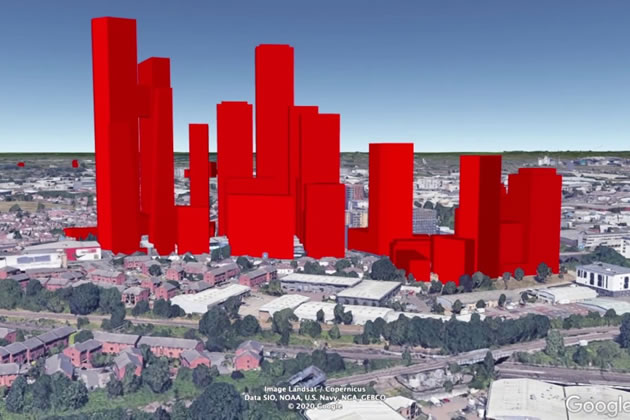Ealing Council and Government Excluding Residents From Planning Process
Cllr Gary Busuttil says they need to be more transparent and proactive

Proposed development in Ealing borough. Picture: Stop The Towers
There hasn’t been a year since I was elected in 2014 where there hasn’t been at least a major and contentious issue that has brought out the passions of residents. This year hasn’t failed in that respect. One of those issues is planning. There seems to be a growing disenchantment with planning applications decided at Ealing Council’s Planning Committee. But I thought I would inform residents of the misconceptions made about planning.
About 2% of all planning applications to the borough planning department are discussed and decided at committee. These 2% of applications are the most contentious where large numbers of residents have expressed objections. Councils have little power to oppose many of the applications submitted, due to the hierarchy of the planning system. Any Local Plan is superseded by the London Plan, which is superseded by the National Planning Policy Framework (NPPF), where many of applications are ultimately decided if the application is to be reviewed by a higher authority.
Given that the Conservative government has changed the rules in recent years it means some bad applications that could have been turned down, now is not possible.
Planning has been used as a cash cow to help fund schemes to mitigate against the negatives of approved developments through what is called S106 money. Previously, applications were more straightforward, but today Ealing Council negotiates at length with developers for concessions, such as affordable housing provision, trees plantations, traffic calming measures, local health amenities, and a whole host of other measures. Therefore, it is a matter of getting a balance between the applicant, the Council and residents find mutually acceptable.
In applications that come to committee, Councillors attend site visits, listen to objectors, applicants and officers, and read the reports. I feel I would not be doing my job correctly if I were not making decisions on a rational and informed basis. Sometimes responses to Councillors can be heated, and don’t help their cause. Legal action is sometimes considered and pursued, though anyone is quite within their rights to do that, however anyone pursuing legal action also work within the same regulations as everyone else.
However, I interpret the fraught nature of some applications with a perceived lack of transparency, and a process designed to favour the applicant. I grant the fact that the process seems to be weighted in favour of the applicant, for instance an applicant only has the right to appeal if refused. Though the NPPF encourages applicants to engage with the local community, and many do with a leaflet drop, I feel the Council needs to be much more transparent and proactive. The planning portal could be more user friendly, planning notices on lampposts should be scrapped in favour of an addressed mailing, value the purpose of site visits more, and respond to residents’ queries.
However, as I mentioned in a previous article “Does coronavirus permit the curtailment of local democracy”, new planning regulations which the government would like to push through could send any effort from Councils or developers to increase transparency into reverse and take away the little power Councils have to reject applications away from them.
Future planned changes by the Conservative government are likely to mean that the Council and Councillors have less power to turn away bad application which might lead to more developments in the wrong place.
Therefore, residents feel they have even less say to applications that may affect them.
Councillor Gary Busuttil
Southfield ward councillor for the Liberal Democrats
November 14, 2020